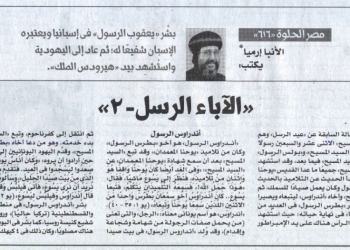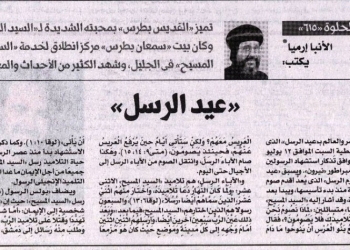A new page of human history was written by Egyptian hands last Thursday, when the world’s attention turned to the jewel of its east: Egypt, displaying one of its most beautiful archaeological pearls: the city of Luxor, which alone encompasses a third of the earth’s antiquities, so it became an open world museum, after reviving the oldest archaeological road in the world; The Road of Rams (Al-Kebash Road), which links the temples of Luxor and Karnak, along approximately 2,750 meters, and nearly of 250-feet-width. The inauguration of the “Road of Rams” comes after the procession of mummies Egypt presented last April, which reflects its keenness to highlight the glories of its past and the struggle of its present, guided by its wise leaders. I immediately remember the words of Taha Hussein, the Dean of Arabic Literature written back in 1933 in Kawkab Al-Sharq Magazine: “The Egyptian Pharaonic civilization is rooted in the souls of the Egyptians, and it will remain so. Rather, it must remain and be strengthened.”
A quick glimpse of the history of the Road of Rams, which dates back to 3500 years nearly: Its establishment began during the reign of the eighteenth family, and was completed in the era of King Nekhtenbo I, the founder of the thirtieth family (380- 362 B.C), but on the course of years, it had its features lost under the sand! In 1949, the Egyptian archeologist Zakaria Ghoneim discovered eight statutes there, excavations followed during 1950s and 1960s, driving the relentless Egyptian determination to continue working since 1984 until the beginning of the new century, in order to identify the complete route of the road. A new stage of the continuous work started in 2007 but stopped in 2011, then was continued in 2017 until 2021, in which Egypt has presented its gift to the world.
The Road of Rams consists of a stone platform in the middle, lined with 1200 sandstone statues on its two sides, taking three shapes: the first is a full ram symbolizing god Amun, the second is a ram’s head with a lion’s body, and the third is a human head with a lion’s body (a symbol of god Sphinx); The statue weighs 5 to 7 tons, and is 3.7 meters long. The Road of Rams has been known as “the path of processions of the gods” to celebrate holidays throughout it, including the “Opet Festival” (the flood season), and the “Pharaoh’s coronation feast” leading a great procession of priests and senior statesmen, coming from the Temple of Karnak until the Temple of Luxor; In the past, it had two names: “Wat Nether” (meaning “the road of the Lord”), and “Ta Mit Rehnit” (meaning “the road of rams”).
Discovering the road, it was necessary to find solutions for a large number of problems hindering its revival, which needs leadership that realizes how important our history is, as well as sons who work with all their efforts to raise their country, and this is how Egyptians are like throughout all ages. The Italian politician and businessman Silvio Burleskoni, who was chosen thrice the Prime Minister, spoken truly when he said: “Nothing new in Egypt; the Egyptians are making history as usual.”
My heartfelt felicitations to the genuine Egyptian people and to His Excellency President Abdel Fattah Al-Sisi; for such great achievement which had been a dream for long years, for the majestic display of the antiquities of Luxor, and for the inauguration of the “Road of Rams” which befits Egypt; the first civilized country in the world; and also to the honorable scientist, Minister Prof. Dr. Khaled El-Anany who accurately drew a wonderful historical view through his panoramic knowledge and variety of information. It spoke the greatness of Egypt that has always fascinated the world throughout ages. A salute of appreciation and pride to all those involved in realizing the dream: archaeologists and restorers, workers and administrators, bodies and institutions. Yes, this is Egypt that establishes human civilization and makes history since its dawn through its loyal sons; this is Egypt that the world has always known bearing witness for itself through its antiquities and actions, its past and present, its ambitions and future. The great poet Hafez Ibrahim was moved to compose the following lines:
Men have stood watching me erect the house of glory all by myself
And, at times of challenge, the builders of the Pyramids spoke on my behalf
I’m the crown of glory, put on the East’s head, its diamonds belong to me
Nothing in the west is beautifully fascinating people unless I have it
And… stories about beautiful Egypt never end!
The General Bishop
Head of the Coptic Orthodox Cultural Center


 العربية
العربية











